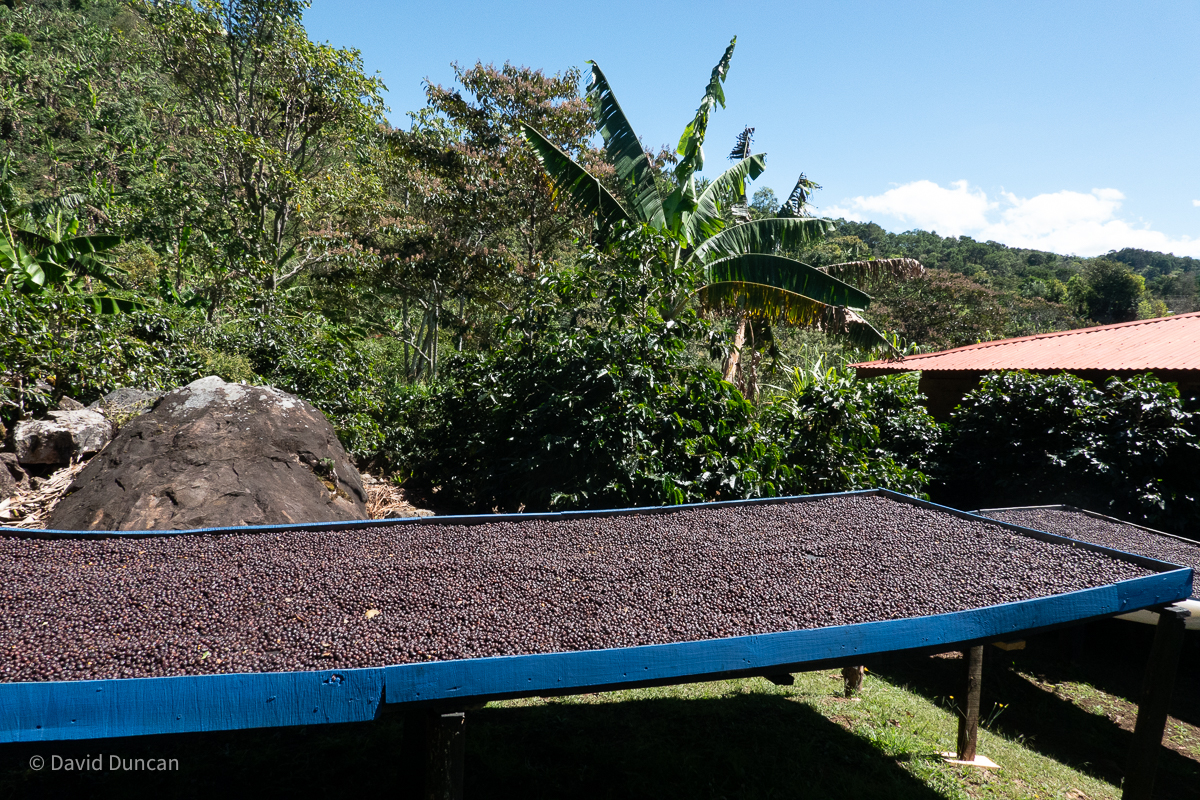Many of the smaller and medium farmers take their produce to cooperatives or processing plants for processing, but some wish to control the quality of the beans themselves and work with micromills – beneficios. In the context of coffee processing a beneficio is a micro mill often with shared ownership.
I am looking forward to gathering information on the many variations of the basic processing methods, on the experimental methods being developed and on the 2024 harvest.
The drying bed pictured above is situated in the farm of Don Martin Ureña, where natural processing is preferred.
Here a very brief overview of the two main types of fermentation:
I am happy to explain the difference between the ‘washed’ and ‘natural’ process in coffee processing:
Washed process:
- Pulping: The pulp is removed from the cherry shortly after harvesting.
Fermentation: The beans are fermented in tanks with water for 12-36 hours. - Washing: The coffee is washed to remove all the mucilage.
- Drying: The beans are dried without pulp and mucilage.
Characteristics:
- Cleaner and more uniform flavour.
- Highlights acidity and delicate fruit notes.
- Less full-bodied than natural
Natural process:
- Drying: Whole cherries are dried in the sun without removing the pulp.
- Removal: Once dried, all dried peel and pulp is removed.
Characteristics:
- More intense and complex flavour
- More body and sweetness
- Notes of ripe or fermented fruit
- More variability in flavour
Main differences:
- Processing time: natural takes longer.
- Flavour profile: Washed is ‘cleaner’, natural more ‘exotic’.
- Risk: Natural has a higher risk of undesired fermentation.
- Water usage: Washed requires more water.
- Tradition: Washed is more common in Central America, natural in Ethiopia and Brazil.
Of course, opinions differ on the relative advantages of each method
